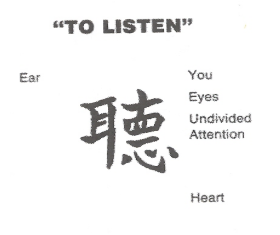of Remarkable
Customer
Support
Create a Human Connection
We have just talked about the psychological need of your customers to feel seen and understood. That lays a strong foundation for everything you do to support your customers. But there’s an overarching principle that, once understood, can help you give your customers exactly what they want. This is the one rule that should guide everything you do to support your customers!

“In an era when companies see online support as a way to shield themselves from ‘costly’ interactions with their customers, it’s time to consider an entirely different approach: building human-centric customer service through great people and clever technology. So, get to know your customers. Humanize them. Humanize yourself. It’s worth
it.”
Engage with customers as one human to another
This concept has never been more important than it is now. In our digitized, automated world, people do, in fact, become invisible, falling through the cracks, being ignored and forgotten.
And technology, even when it’s meant to save time, can prevent people from getting the care they need. As an example, I (Kathryn) recently needed to fix an action I’d taken on eBay. I had clicked the wrong button when requesting a refund and was sent into an endless loop of automated messages — with no human touch available. I could direct-message the seller, but I couldn’t contact anyone at eBay to go into the system and fix my mistake.
eBay lost a lot of points when I realized there was no way to undo that keystroke. I desperately wanted a human connection — but they’d set up their business to remove the “need” for customer support. Or so they thought. You hear similar complaints about phone support lines that transfer customers from one automated message to another, an endless cycle that never connects to a human agent. And soon, chatbot messages will reach this same point, creating efficiencies for the business but a gnawing dissatisfaction for customers.
As technology continues to evolve and improve, more businesses will adopt a no-touch model in one form or another. As a result, it’s going to become more and more difficult to connect to a human. Yet human connection is the deepest need we all share.
If we want to create happy customers, we can’t avoid this issue. We must be human if we want to connect with people. We must talk to them as one human to another. We must listen to them and respond as humans. We must bring all the nuances of “being human” into the very center of our systems and procedures.
The Rise of Chatbots
It may sound easy, but being human is one of the most challenging aspects of customer support. “Being human” connotes empathy, support, kindness, and understanding. Yet these are the very things customers complain are missing when they engage with brands.
Is it any wonder that businesses and consumers alike are interested in chatbot technology? The idea of self-service, where a customer can find their own answers and solve their own problems, is attractive from both perspectives. And when it works right, it’s an interesting approach.
A study by Aspect has found that fewer customers are requesting help from a live agent, a trend that’s impacting multiple industries. The reason? Consumers are tired of not getting the support they need. They prefer no support to bad support.
Aspect Software: 2017 Aspect Consumer Experience Index
What are they looking for? According to this same study, they want effective solutions, delivered quickly and accurately. Nearly half (forty-five percent) of consumers don’t care whether support is provided by a person or a chatbot — if these criteria are met.
We’re inclined to believe that people aren’t drawn to chatbots, per se. They’ve simply lost hope that live agents can help. With companies that deliver unforgettable service, we believe customers would prefer getting help from a human. And Aspect’s study backs this up: seventy-one percent of consumers want to be able to connect with a live agent after initiating support with a chatbot.
As you can see, the human touch is critical to happy customers. Consumers need (and want) a human-to-human interaction that offers more support, more nuanced solutions, and a more empathetic response. Let’s look more closely at how human-to-human support typically fails, and how to overcome those shortcomings.
The Seven Deadly Sins of Customer Support
It’s a sad indictment on business, but most brands are guilty of being more focused on efficiency than on being human, prioritizing the system over the individual needs of customers. That’s led to some common hot buttons, or triggers, that can quickly turn to dissatisfaction.
According to customer service expert Adam Toporek, author of “Be Your Customer’s Hero”, there are seven triggers you need to avoid in customer support:
- Ignoring customers
- Abandoning them
- Hassling them
- Being incompetent
- Shuffling customers from one agent to another
- Making customers feel powerless
- Being disrespectful
Adam Toporek, Customers That Stick: 3 Psychological Triggers to Prevent in Telephone Customer Service
Think of these as the seven deadly sins of customer support. They make your customers feel “less than,” removing the human element from every interaction and making them less inclined to talk to a live agent.
But look at them. These triggers are a top-seven list of people’s biggest fears in any relationship. At all costs, we try to avoid being ignored, abandoned, hassled, and disrespected. We try to remove ourselves from people who are incompetent, make us feel powerless, or don’t reciprocate our kindness. We may have to put up with this type of treatment in other areas of life, but we have no patience with it from the businesses we buy from.
Obviously, what’s missing is the human element. Customer support must be consistently human. If we approach every customer as a valuable human being, we’re far less likely to fall into these seven deadly sins.
How to Offer Human Support
So how do we do that? How do we balance our business needs with the human needs of our customers? Let’s look at four tips that will keep you from triggering your customers' biggest relational fears — and create warm, positive feelings instead.
Use Their Favorite Word
Dale Carnegie once said:
“ A person’s name is to him or her the sweetest and most important sound in anylanguage.”
This is, perhaps, the easiest way to be human.
Dale Carnegie, Simon & Schuster: How to Win Friends and Influence People
To answer specific questions from customers, you’ll need to look up their account information. Once they give you their name, it makes sense to greet them as Mr. or Ms. [last name] or by their first name, whichever is most appropriate.
In many cases, though, our technology tells us a contact’s name before we begin talking to them (think live chat, email, and social media). In these cases, you can open the conversation with their name:
Hi [name], I’m Sally. How can I help you?
Step Away from the Script
Scripts create consistency and efficiency. But when customers need to talk to a human, they often want a more personalized experience.
Scripts should be guidelines, not required responses. They should help an agent know how to respond to specific questions or situations but remain flexible enough to be adapted — because strict word-for-word recitals come off sounding like a bot, even when delivered by a human.
In order to respond to the unique needs of each customer, you need to be able to go off-script. You need to be allowed to respond as a person, not a corporation. As Jeff Bezos said in his 2017 annual Letter to Shareholders:
“ We can have the scope and capabilities of a large company and the spirit and heart of a small one. But we have to chooseit. ”
Personal, one-on-one conversations are the domain of small companies. As small companies grow, however, they tend to adopt many of the efficiencies of big companies, including time-saving processes and scripts. As soon as they do that, they begin to lose relevance. They lose the attraction of being purely human.
Unless, of course, you allow yourself the luxury of ignoring the script.
Listen Actively
Of course, without a script, you’ll need to have a real conversation. One of the most effective ways to communicate — especially if the person you’re talking to is concerned or worried — is to listen. Actively listen.
The U.S. Department of State, the foreign affairs agency responsible for diplomacy and foreign policy, understands the importance of being able to communicate with people who don’t have the same language or communication style. On their website, they share the Chinese symbol for “to listen” to illustrate the importance of active listening:
“ The most common problem in communication is not listening! A Chinese symbol for ‘To Listen’ is shown below. It is wise beyond the art. The left side of the symbol represents an ear. The right side represents the individual — you. The eyes and undivided attention are next and finally there is theheart.”
U.S. Department of State, Diplomacy in Action: Active Listening

The Chinese symbol for “to listen”
The State Department has set four rules of active listening for their diplomats:
- Seek to understand before you seek to be understood.
- Be non-judgmental.
- Give your undivided attention to the speaker.
- Use silence effectively.
These same rules can help brands interact with customers in a way that makes them feel valued. We’d only add one more rule to ensure customers feel they’ve been understood: After a customer has shared a problem or difficult situation, respond by paraphrasing what they’ve just told you, followed by the words, “Is that right?” Let them correct you until you understand their need.
Active listening isn’t easy, but it’s the foundation of a human-to-human connection. It helps customers feel that they’re being taken seriously, and it defuses the emotions or defensiveness that may have prompted customers to reach out. In many cases, active listening turns a potentially negative interaction into a positive one that builds trust and loyalty — simply because you were able to communicate that you cared.
Find the Problem Behind the Emotions
Not too long ago, I (Kathryn) got an email from Wayfair addressed to someone named Tomy, explaining that his order had been canceled. Trouble was, the order was made with my email. I didn’t know Tomy. I hadn’t placed an order. And according to the email, the canceled order had totaled six hundred dollars:
Wayfair: e-mail message to Kathryn Aragon, September 18, 2018

The automated email alerting Kathryn to a possible theft of her identity
As you might guess, I was upset that someone had tried to order a product with my user account. Worse still, I was afraid my identity had been stolen and that someone had access to my credit card information.
When I called Wayfair, my emotions were a volatile mix of worry, anger, and fear — none of which was Wayfair’s fault. They had, after all, declined the order. On the other end of the phone, Wayfair’s agents simply wanted to assure me that the order had been canceled. I already knew that. I was worried about a deeper problem: identity theft.
Fortunately, Wayfair’s customer support team understood the need to look beyond the initial problem expressed by a customer. It took time, but the agent finally understood my concern and transferred me to someone who could give me the assurances I needed.
All too often, customer support is on the front line, taking the hit when customers are unhappy about something — even when that something isn’t their fault. When a customer complains or expresses frustration, your first instinct may be to respond in kind.
Don’t get defensive. Instead, try to get to the root of the problem. You need to figure out why your customer is upset so you can address the real problem, not just the surface problem.
First of all, realize you aren’t the object of customers' frustrations. And you aren’t responsible for fixing every situation. You are responsible for defusing the situation, reassuring customers that you hear them, giving them whatever help you can, and letting them know you care.
In my call to Wayfair, I didn’t relax until I verified that the credit card information used in that order wasn’t mine. My deepest fear was identity theft, and once I was sure that hadn’t happened, I was able to end the call, feeling good about Wayfair’s handling of the situation.
That’s what you want. Over the course of the interaction with you, the customer should relax, knowing their question, worry, or frustration has been expressed and handled. Listening is your priority, but you must also learn how to let your customers express their emotions without being sucked into the vortex with them.
Stay objective. Stay calm. Do what you can to help. Then shake off whatever residual emotions remain at the end of the call.
In this chapter, we covered one of the three core elements of unforgettable customer support. Being human — establishing that you are a living, breathing human — is essential to building a great customer experience. But you also want to communicate that you care. For that, you’ll rely on the second core element, which we cover in the next chapter.
of Customer Service
with Empathy